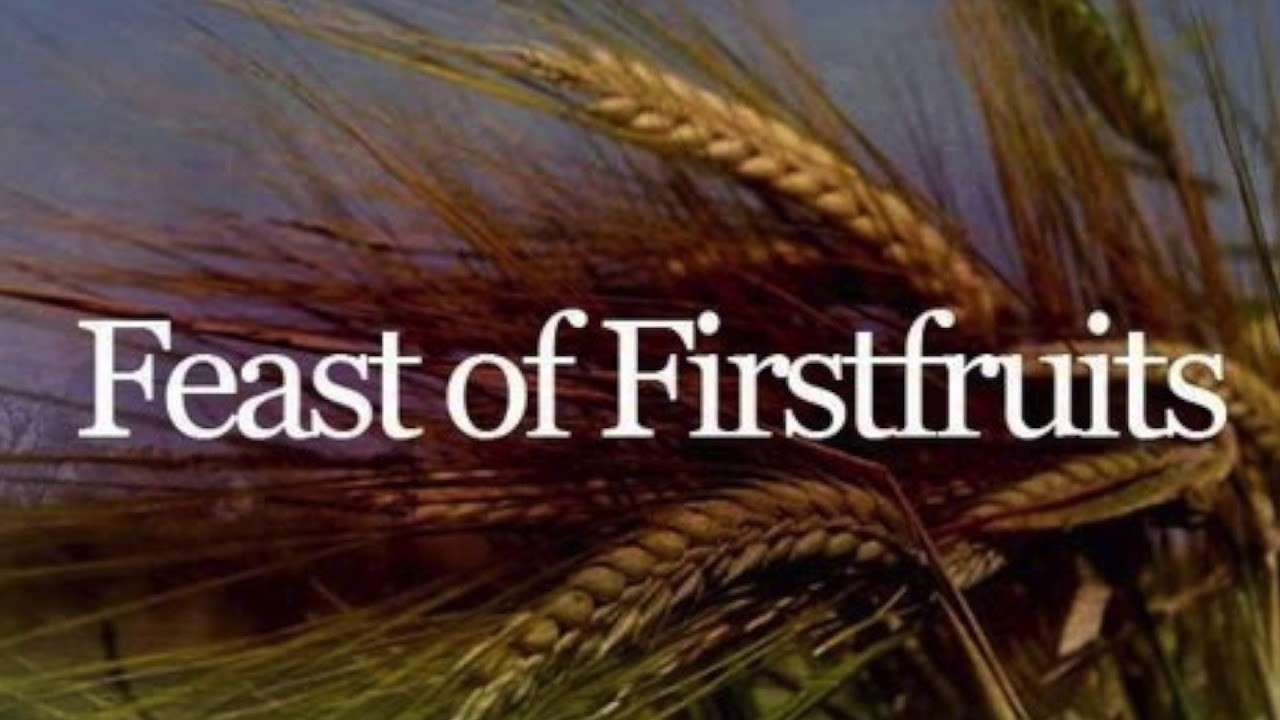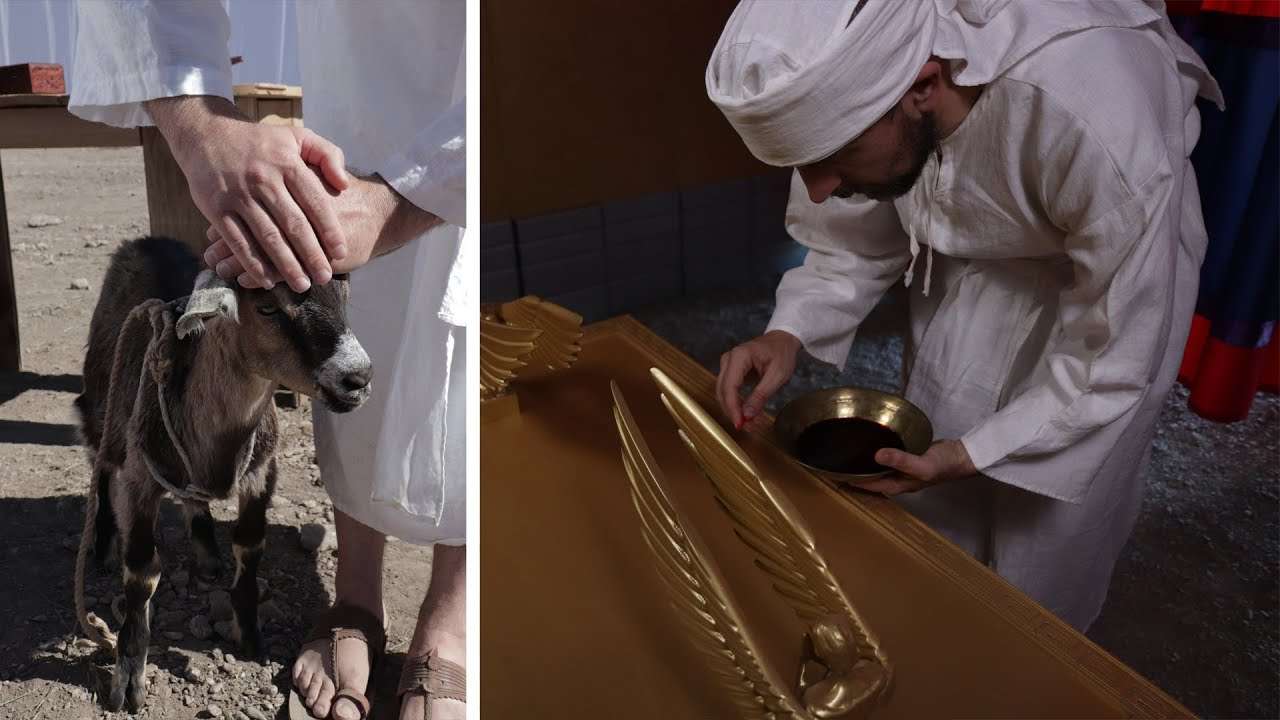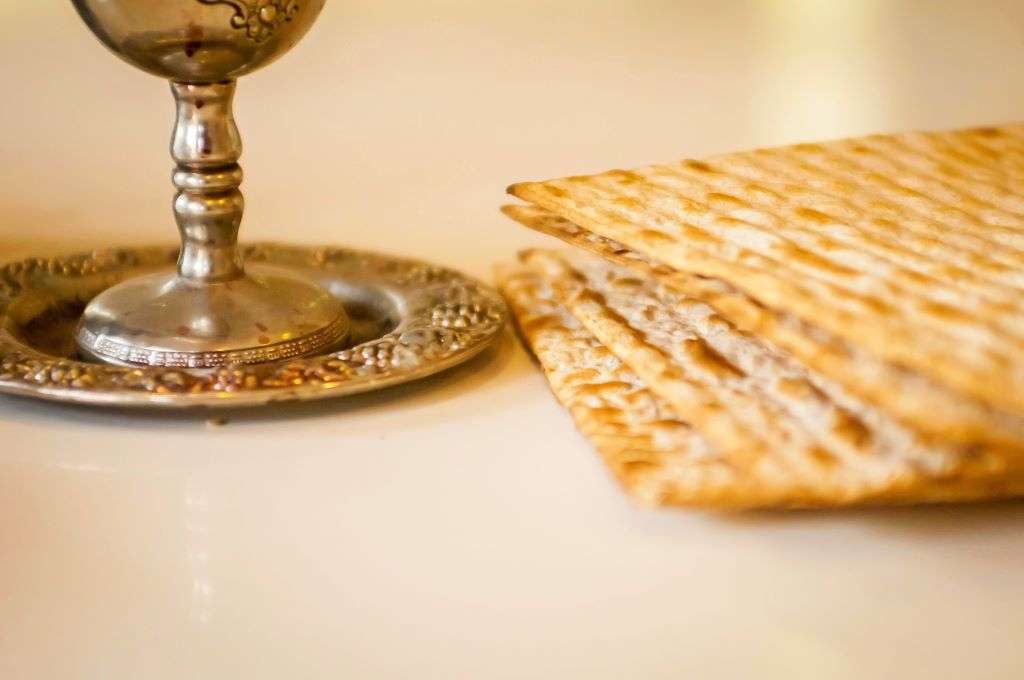
The Feast of First-Fruits
Mr. John Ritchie
“The first of the first-fruits of thy land thou shalt bring into the house of the Lord thy God” (Exod 23:19).
“Now is Christ risen from the dead, and become the first-friuts of them that slept” (1cor. 15: 20).
“First-fruits of the resurrection,
He is risen from the tomb
Now I stand in new creation,
Free, because beyond my doom,”
Closely connected with the Passover, and while the feast of unleavened bread was in progress, the third of Jehovah’s Feasts took place. This was the feast of First-Fruits. The land of Canaan was the proper scene of its celebration. Israel had observed the Passover, and the feast of unleavened bread during the years of their pilgrimage in the wilderness (see Num 9: 2-3), but before they could celebrate the Feast of First –fruits or indeed any of the feasts that followed it; it was needful that they should be possessors of the Land of Promise.
Their calling and destiny was not the wilderness, but the land. They had indeed to pass through the wilderness, and learn its lesson (Deut 8:3), but it was not to be their dwelling – place. The purpose of Jehovah, who had brought them out of Egypt by His out- stretched arm of might, was to bring them into the godly land flowing with milk and honey,” a land of wheat and barley, and vines, and fig-trees, and pomegranates” (Duet 8:7-9), where they should lack nothing. Possessors of that land of fullness, this new ordinance of the sheaf of first-fruits was to have their care. In the midst of prosperity, the claims of Jehovah were to be first remembered. “Ye shall eat neither bread, nor parched corn, nor green ears, until the self-same day that ye have brought an offering unto your God.” That offering, was a sheaf reaped from the waving fields of ripened harvest, and carried to the priest, to be waved before the Lord to be accepted for them, followed by burnt-offering, meat-offering, and drink-offering-notably, no sin offering. The time when this was to be done was “the day after the Sabbath,”
After the wilderness had been trodden, Jordan crossed, and Israel settled in the land of promise, they offered, the sheaf of first-fruits, and reaped their harvests year after year. But they understood not the meaning of the ordinance. It was no more understood than was the killing of the paschal lamb, although both were foreshadowing of Christ. Another Lamb, another First-fruits, and other harvests, were in the mind of God. And when the full time had come for the great Antitype of these to be made known among men, they ought to have discerned and received Him with joy. But sin and unbelief had sealed their eyes. They saw no beauty in the Lamb of God when He was presented to them; they led Him forth to the slaughter. Neither did they own and receive Him after He had as the First-fruits, risen from the dead, but forged a lie in face of His empty grave, and sought to stifle the voices of His servants, who preached His resurrection from among the dead. For this cause, Israel’s harvests of blessings lie still unreaped, and the great Husbandman has gone forth to other fields, which–like as Samaria was in the days of the Lord’s earthly ministry–are “white unto harvest” (John 4:35).
There can be no doubt that the sheaf of first-fruits reaped from the harvest field, on the morrow after the Sabbath, and waved before Jehovah in His temple for acceptance–the pledge to Israel of may sheaves to follow–was a type and foreshadowing of Christ risen from the dead. The very name of that sheaf is the name given to Him as the One risen from among the dead–“Christ the First-fruits”. And then, as if to show the close connection of that sheaf with the harvest to follow, the Spirit adds–“Afterward, they that are Christ’s at His coming” (1 Cor 15:23). The Lord Jesus honoured the day of the killing of the paschal lamb, by presenting Himself to God in death, “a Lamb without blemish and without spot”. He honoured the day of the waving of the sheaf of first-fruits, by presenting Himself to God as the First-born from among the dead. Israel’s priest no doubt waved the sheaf in empty form, before a rent veil in the temple at Jerusalem, but outside the city’s gates, God had reaped the Great Wave-sheaf from Joseph’s tomb early that same morning. The Substance had come, and the shadow passed away. “When the Sabbath was past” (Mark 16:1), and the Marys had gone out “very early in the morning” to the tomb, they found it empty. The Lord had risen. The first great Sheaf had been reaped of that harvest, which God has since been gathering into the garners of heaven, all to be accepted in, and associated with their great Representative, the “First-born” from among the dead.
And here we might pause for a moment, and refresh our spirits, by a brief survey of this great gospel fact, the resurrection of Jesus Christ, and what it involves to Him, and to us. Even now the saints are “quickened together with Christ” (Eph 2:5), they share His life, they are risen with Him (Col.3:1). In incarnation, He was the only-begotten Son of God (John 1:14; 3:16), and as such He stood alone. It has been erroneously taught, that in becoming man, He linked Himself with our race, and this raised men as men to a higher level. But the Scriptures say not so. They clearly and definitely teach, that only by redemption and regeneration are sinners brought from death to life, and from Satan to God. This is the only way of vital union with Christ.
As “the corn of wheat” He stood alone, the only begotten of the Father; but having died, He arose, no longer alone, but as “the First-born from the dead” (Col.1:18), “the First-born among many brethren” (Rom.8:29). This new relation was first made known to Mary on the resurrection morning, in the ever-memorable words of the risen Christ in the garden–“I ascend to My Father and your Father, to my God and your God.” And just as the acceptance of the sheaf of first-fruits presented before Jehovah was for the whole of Israel’s harvest, so the acceptance and welcome to haven given to Christ as the Representative of all His people, is the seal and the pledge of their welcome there. Yea, even now they stand in His acceptance; they are “accepted in the Beloved.” The Father’s love to Him is the measure of the Father’s love to them (John 17:23). They are as near and dear to God as Christ is. What a wonderful truth! Well, may we sing–
“So dear, so very dear to God,
More dear I cannot be;
The love wherewith He loves the Son,
Such is His love to me.”
Such is the present sphere of blessing to which the resurrection of Christ introduces His people. And what about the future? Let us see. Resurrection of the dead (Heb.6:2), is one of the great foundation truths of the Scripture. It was denied by the Sadducees (Matt. 22: 23), as it is now by modern Rationalists and “Higher Critics.” It was generally accepted among the Jews that there would be a “resurrection of the dead” (Acts 23:6). Martha of Bethany’s words to the Lord concerning her brother Lazarus, aptly express the Jewish faith on the subject–“I know that he shall rise again in the resurrection at the last day” (John 11:24). This was all the light that had been given, but the Lord’s answer in verse 25, tells of something brighter and better. Once and again He had hinted to His disciples that there would be a resurrection from (literally “from among the dead,” Mark 9:9-10–see Newberry, Rotherham, etc.), but they did not grasp the meaning of His words. “Resurrection of the dead” is true of all; for all who have died, whether saved or lost, shall rise, though not at the same time, or for the same destiny. There will be a “resurrection of life” and a “resurrection of judgment” (John 5:29), a “resurrection of the just and the unjust” (Acts 24:15). The resurrection of the Lord Jesus was “from among the dead.” And this is the word that is always used to describe the resurrection of His people. It will be an “out-resurrection” (Phil.3:11, Newberry); a resurrection ‘from among dead ones”. When the Lord shall descend from heaven with a shout–“the dead in Christ shall rise first” (1 Thess.4:16). But the unconverted dead around them, will not stir on that fair morn. When the great First-fruit Sheaf was reaped, we read that “many bodies of the saints” that had fallen asleep were raised, and after His resurrection appeared (Mathew 27:53)–a pledge of the greater harvest still to come–but not one sinner’s tomb was stirred, not one of the unregenerate arose. So shall it be at the first resurrection. “The rest of the dead” live not again, until the thousand years of millennial blessedness have passed (Rev. 20:5), and then they are raised for judgment (Rev. 20:12). How vast the difference both in time and character is their resurrection from that of Christ and His saints!
The sweet-savour sacrifices which were offered on the same day as the sheaf was waved, may point to the ground of our association with, and acceptance in, the Risen Christ. He ascended to heaven in the Excellency of His own peerless Person, but our title to be there with Him–now by faith, and soon in bodily presence–is found in the worth of the One Great Sacrifice offered for us. Even when we stand in resurrection bodies amid the glories of heaven, our song shall then as now be of the Lamb who was slain for us.
“I stand upon His merit,
I know no other stand;
Not e’en where glory dwelleth–
In Immanuel’s land.”


